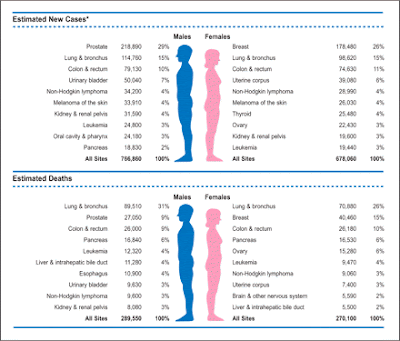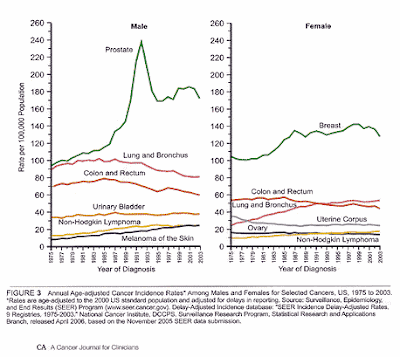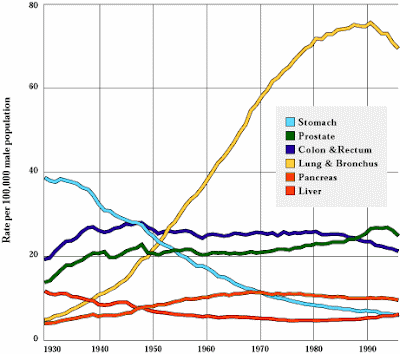
According to the CDC in 2004 - the following are the top ten causes of death for males in the United States between the ages of 25-34.
1. Unintentional Injury - 34.8%
2. Suicide - 14.6%
3. Homicide - 13.3%
4. Heart Disease - 7.6%
5. Cancer - 6.2%
6. HIV Disease - 3.2%
7. Diabetes - 1.2 %
8. Stroke - 1.0%
9. Birth Defects - 0.8%
10. Chronic Liver Disease - 0.8%
Unsurprisingly, most of the deaths are not related to traditional disease: accidents (probably mostly automobile), suicide, and murder. This possibly suggests the need for better mental health counseling, which is an area I know very little about - including it's effectiveness and differences between nations.
| Causes of Death | Number of Deaths | Rate per 100,000 |
| 25-44 years All causes | 148,904 | 177.8 |
| 1 Accidents and adverse effects | 26,554 | 31.7 |
| . . . Motor vehicle accidents | 14,528 | 17.3 |
| . . . All other accidents and adverse effects | 12,026 | 14.4 |
| 2 Human immunodeficiency virus infection | 22,795 | 27.2 |
| 3 Malignant neoplasms, including neoplasms of lymphatic and hematopoietic tissues | 22,147 | 26.4 |
| 4 Diseases of heart | 16,261 | 19.4 |
| 5 Suicide | 12,536 | 15 |
| 6 Homicide and legal intervention | 9,261 | 11.1 |
| 7 Chronic liver disease and cirrhosis | 4,230 | 5.1 |
| 8 Cerebrovascular diseases | 3,418 | 4.1 |
| 9 Diabetes mellitus | 2,520 | 3 |
| 10 Pneumonia and influenza | 1,972 | 2.4 |
| . . . All other causes (Residual) | 27,210 | 32.5 |
You can notice the homicide and suicide rates are down, while Cancer and HIV increase. However this data is a bit older (1996), so the HIV mortality rate has gone down in recent years.
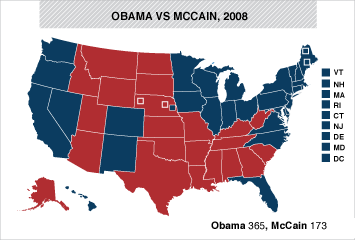

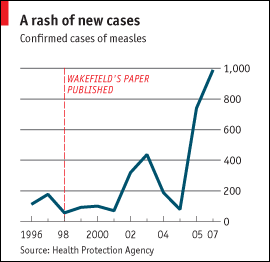


 Source: ACS 2008 Cancer Statistics Presentation
Source: ACS 2008 Cancer Statistics Presentation